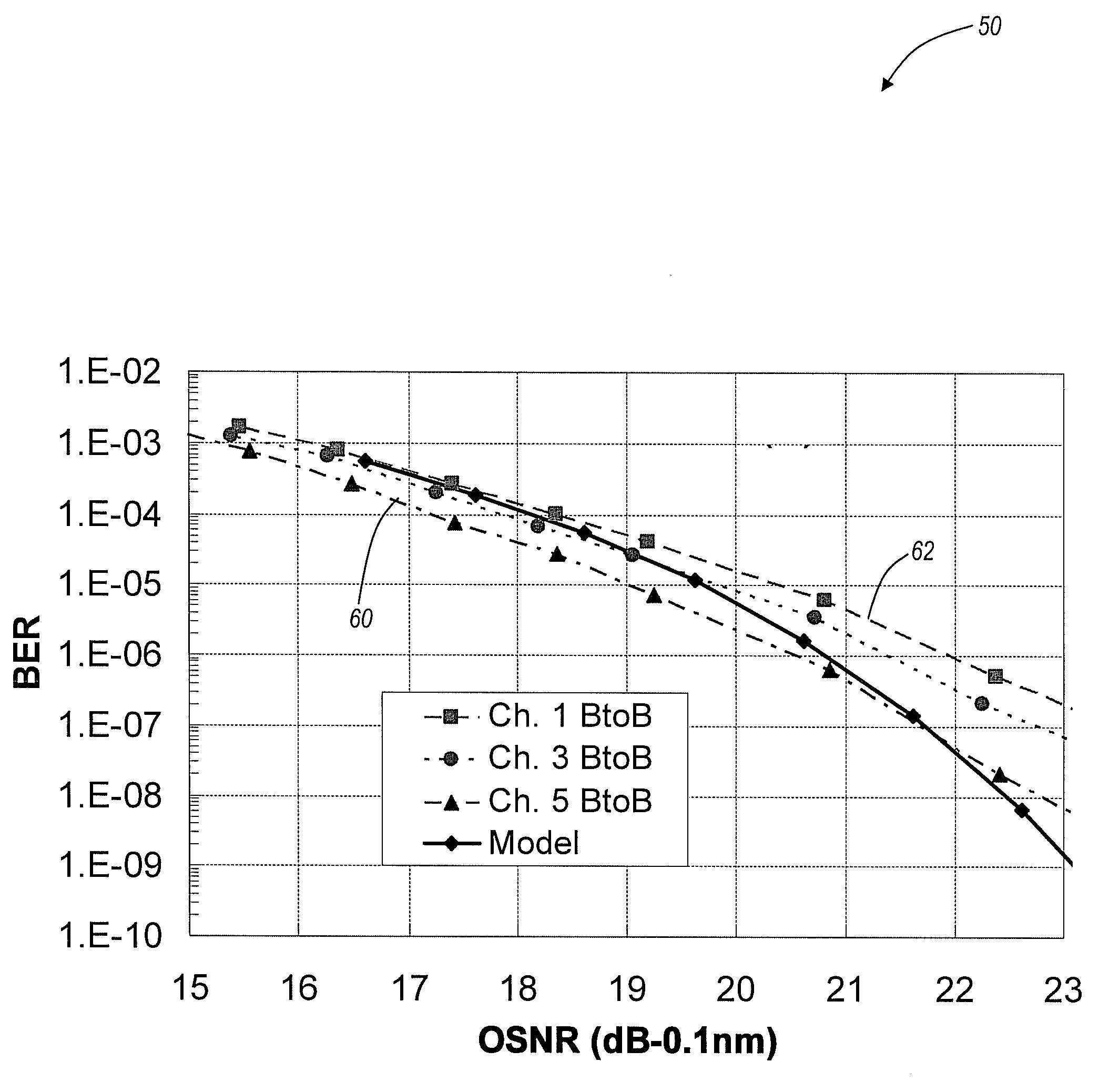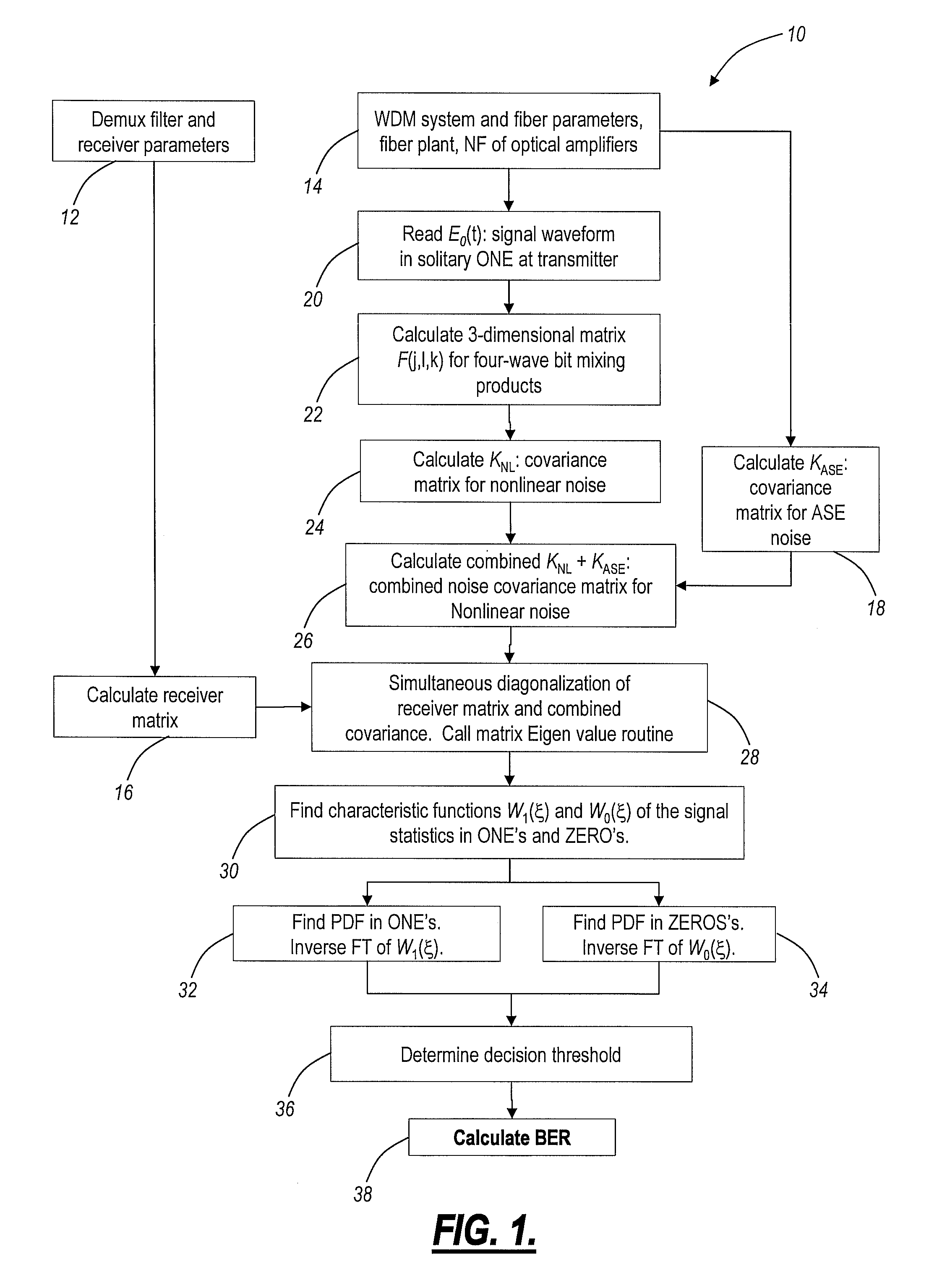Systems and methods for highly efficient bit error rate modeling in quasi-linear communication networks
a quasi-linear communication network and bit error rate technology, applied in the field of communication networks, can solve the problems of prohibitively inefficient direct computation of ber using monte carlo simulations, computationally efficient and accurate ber calculation still remains a challenge, and test would take months to complete, and achieve high-efficiency bit error rate (ber) modeling
- Summary
- Abstract
- Description
- Claims
- Application Information
AI Technical Summary
Benefits of technology
Problems solved by technology
Method used
Image
Examples
Embodiment Construction
[0015]In various exemplary embodiments, the present invention provides a highly computationally efficient semi-analytical technique for modeling BER in quasi-linear communication systems, such as WDM optical systems. The present invention avoids both the Monte Carlo and Karhunen-Loéve simulation techniques and does not use PRBS signals. Advantageously, the present invention is capable of calculating BER within one minute using a conventional single processor 2 GHz computer, i.e. an improvement of several orders of magnitude. In the present invention, nonlinear noise, due to four-wave mixing (FWM) and cross-phase modulation (XPM), is treated within a linearization approach along with the amplified spontaneous emission (ASE) noise, and the nonlinear noise is considered as another source of noise in addition to the ASE noise.
[0016]Advantageously, the present invention provides a dramatic (at least two orders of magnitude) increase of the computational efficiency in BER calculation for ...
PUM
 Login to View More
Login to View More Abstract
Description
Claims
Application Information
 Login to View More
Login to View More - R&D
- Intellectual Property
- Life Sciences
- Materials
- Tech Scout
- Unparalleled Data Quality
- Higher Quality Content
- 60% Fewer Hallucinations
Browse by: Latest US Patents, China's latest patents, Technical Efficacy Thesaurus, Application Domain, Technology Topic, Popular Technical Reports.
© 2025 PatSnap. All rights reserved.Legal|Privacy policy|Modern Slavery Act Transparency Statement|Sitemap|About US| Contact US: help@patsnap.com



